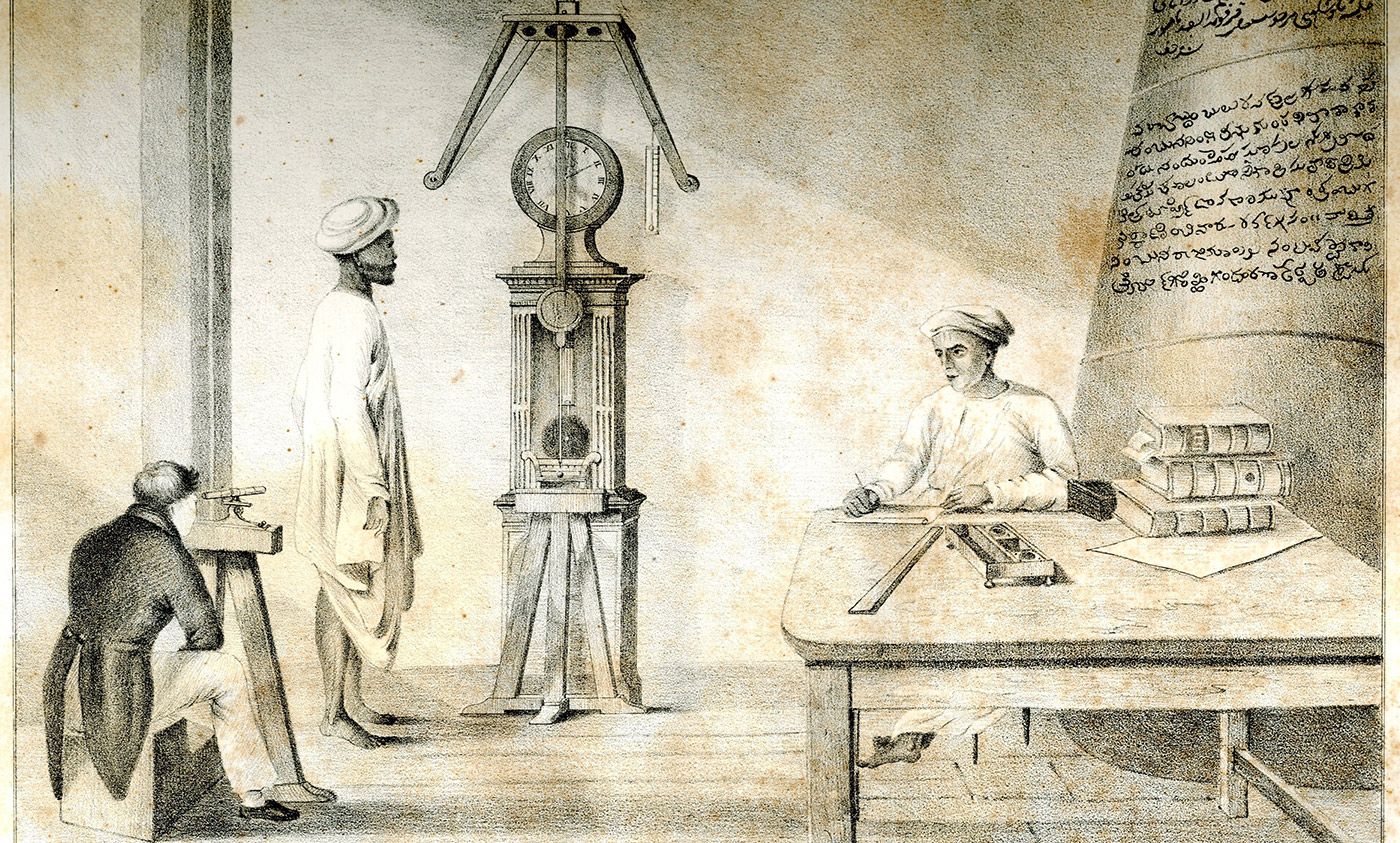by BLAKE SMITH
 Inside the Madras Observatory in 1827 PHOTO/Wikipedia
Inside the Madras Observatory in 1827 PHOTO/Wikipedia
The Madras Observatory offers little to the visitor’s eye. Stone slabs and broken pillars lie ignored in a fenced-off section of a local weather centre in the southern Indian city of Chennai. Few tourists venture out to see the ruins of the 18th-century complex. On the other side of the subcontinent, in northern Indian cities such as New Delhi, Varanasi and Jaipur, remains of the Jantar Mantars, vast astronomical stations, are far more popular attractions. Built in the same century as the Madras Observatory, their stark geometric structures, with looming proportions and vibrant colours, make for mandatory stops on travellers’ itineraries. Yet it is the Madras Observatory, and not the spectacular Jantar Mantars, that marks the triumphal fusion of scientific knowledge and imperial power.
South Asians had been studying the heavens long before the 18th century. The subcontinent’s first texts on astronomical phenomena date back more than 3,000 years. As was common throughout the ancient world, observations about the movements of stars and planets often served the needs of astrologers and priests. Nevertheless, they formed an impressive body of scientific knowledge, one that was further enriched by contact with other cultures. The Islamic conquest of South Asia in the medieval era brought Persian and Arab discoveries along with it, and the Mughal Empire promoted a blend of South Asian and Islamic astronomical knowledge in the 16th and 17th centuries. The city of Lahore, in modern-day Pakistan, became a centre in the production of sophisticated astronomical instruments such as celestial spheres. By the early 18th century, as Mughal rulers lost control of most of the subcontinent, local rulers used astronomy to promote their own authority. They built the flamboyant Jantar Mantars across northern India to show that, just like the great dynasties before them, they too were patrons of knowledge.
The era’s greatest promoter of astronomy was Jai Singh II, the 18th-century raja of Jaipur. He oversaw the construction of monumental observatories across his domains, using them not only to overawe subjects but also to gather useful knowledge about the lands he ruled. His Jantar Mantars, like others in South Asia, featured massive sundials, sextants and other instruments of observation, but lacked telescopes, which had been invented in Europe a century before. Eager to capitalise on European knowledge, and to show the global reach of his influence, Jai Singh II came into contact with French missionary scientists.
AEON for more
